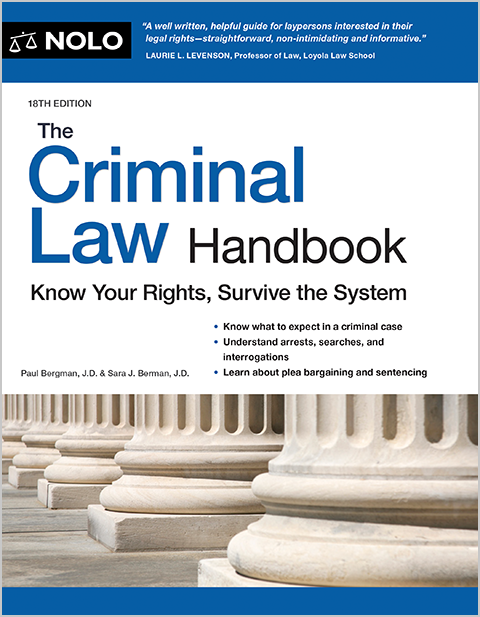Social Security recognizes that severe nerve root compression caused by arthritis, herniated discs, or vertebral fractures can be debilitating.
Nerve root compression—often resulting from spinal stenosis or degenerative disease—can cause significant pain, weakness, and reduced range of motion. Depending on what area of the back is affected, people who have nerve root compression may have trouble sitting, walking, or lifting heavy objects. If your symptoms are severe enough to interfere with your ability to work on a consistent basis, you may want to consider applying for Social Security disability benefits.
While back disorders are some of the most common impairments in successful disability claims, simply having a diagnosis of nerve root compression isn't enough to qualify. Knowing what the Social Security Administration (SSA) needs to see in order to determine that your nerve root compression is a disabling condition can strengthen your claim and help you get benefits faster.
- Is Nerve Root Compression a Disability?
- Getting Disability by Meeting the Listing for Nerve Root Compromise
- Getting Disability When Nerve Root Compression Reduces Your Functional Capacity to Work
- Medical Evidence You Need to Prove Disability
- VA Disability for Back Disorders
- What's the Disability Benefit Amount for Nerve Root Compression?
- Applying for Disability Benefits
- What If I Didn't Qualify for Benefits?
Is Nerve Root Compression a Disability?
It can be when it prevents you from working consistently for a year or more. Social Security awards disability benefits to people who have a medically determinable impairment that keeps them from earning at or above the level of substantial gainful activity for at least twelve months. You can prove this with medical records showing that you either meet the requirements of a "listed impairment" or that you have a "residual functional capacity" that rules out all full-time employment.
Listed impairments are certain medical conditions that the SSA considers especially severe. There are over 100 listed impairments in the agency's "Blue Book" of disorders that can potentially qualify you for disability automatically. If your medical records contain specific information that meets the requirements of a particular listing, the SSA will award you benefits without needing to decide that you can't perform any jobs.
Getting Disability by Meeting the Listing for Nerve Root Compromise
Nerve root compression is evaluated under listing 1.15, Disorders of the skeletal spine resulting in compromise of a nerve root. You can "meet the listing" if you have evidence of the following in your medical records:
- radiating pain, paresthesia (a prickling or "pins and needles" type sensation), or muscle fatigue in the part of the body affected by the compromised nerve root
- physical examinations or laboratory tests demonstrating that you have muscle weakness, signs of nerve root irritation, and sensory changes (decreased sensation, reduced nerve conductivity, or poor deep tendon reflexes),
- objective imaging, like an MRI or X-ray, showing that you have a compromised nerve root, and
- you have significant physical limitations to the point that both your hands can't be used for work-related activities (for example, you use your left hand to hold a cane, but you're unable to type with your right hand).
Meeting the requirements of listing 1.15 isn't an easy task—you'll need to have extensive medical documentation of significant nerve root compression and resulting physical limitations. But even if you don't meet the listing, you can still qualify for benefits if you're unable to perform your past work or any other job in the national economy.
Getting Disability When Nerve Root Compression Reduces Your Functional Capacity to Work
Few people are awarded benefits because they meet a listing. It's much more common to win your disability claim through what's known as a "medical-vocational allowance." In a medical-vocational allowance, Social Security looks at your medical records to see what kinds of work activities you're still able to do despite limitations caused by nerve root compression. The agency then determines if you can return to your past work and, if not, whether any other jobs exist that you can do given your age, education, and skills.
The process of deciding what you can and can't do at work is called assessing your "residual functional capacity," or RFC. RFC assessments for nerve root compression and related back issues almost always contain limitations on the amount of physical activity you can perform. The extent of the limitations will depend on how severe your symptoms are, backed up by medical evidence. For example, a claimant with mild nerve root compression in the cervical spine might have an RFC that limits them to lifting no more than 20 pounds while another claimant with severe nerve compression may be restricted from lifting even 10 pounds on a regular basis.
If you're younger than 50 years old and you don't meet a listing, you'll typically need to show that you can't perform the simplest sit-down jobs in order to get disability benefits. But if you're at least 50, you may have an easier time winning your claim under a special set of circumstances called the "grid rules." Under the grid rules, you can qualify for benefits even if you can physically perform less strenuous jobs provided you've never done that type of job before and you don't have transferable skills that you could use to make the vocational adjustment to other work.
Medical Evidence You Need to Prove Disability
Your medical records are the foundation of your disability claim. Without well documented evidence of your nerve root compression and resulting functional limitations, it will be very difficult to get Social Security benefits, so make sure to keep up to date on your doctors' appointments and to let the SSA know if you switch providers or start a new medication.
After you've filed for benefits, the agency will request your medical records from your doctors and any clinics you've listed on your application. Ideally, you should have most, if not all, of the following evidence in your records:
- objective imaging (such as an X-ray, CT scan, or MRI) confirming a diagnosis of nerve root compression
- physical examinations with notes on your reflexes, sensation, strength, muscle atrophy, and range of motion (such as a positive "straight-leg raising test" for lumbar nerve compression)
- your doctors' notes from each visit for as long as you've been treated for your condition
- a medication list with the prescription date, dosage, and frequency of use, as well as any side effects
- evidence of visits to physical therapy, massage, or other pain relief providers
- records from any steroid injections, and
- any hospital admission and discharge records for surgical intervention.
You may want to ask your doctor to provide a written opinion about what they think your limitations are (assuming you and your doctor are both on the same page about your disability). If your doctor has treated you regularly and can back up their opinion with supportive evidence, the SSA is likely to take their opinion under serious consideration when deciding whether you're disabled.
VA Disability for Back Disorders
Veterans who have service-connected nerve root compression may be eligible for disability compensation from the VA. Veterans may be assigned a disability rating of 10%, 20%, 30%, 40%, 50%, or 100% for spinal disorders, depending on how severely their range of motion is limited (or whether they have unfavorable ankylosis, an abnormal stiffening of the spine due to fusion).
Nerve root compression doesn't have its own diagnostic code in the Schedule for Rating Disabilities, but is instead evaluated under the General Rating Formula for diseases and injuries of the spine. Related conditions such as herniated disc, osteoarthritis, degenerative disc disease, facet arthritis, and vertebral fractures are evaluated similarly. For more information about filing for veterans' disability compensation, see our article on how to apply for VA benefits.
What's the Disability Benefit Amount for Nerve Root Compression?
Social Security doesn't pay disability benefits based on the type of disabling condition you have. Rather, the amount you'll receive if you win your claim depends on whether you qualify for SSDI or SSI, the two disability programs offered by the agency. SSDI eligibility is based on your work history and how much you've paid into the program by way of payroll (or self-employment) taxes, while SSI is a needs-based benefit for people with limited income and assets.
For 2025, you can receive up to $4,018 per month in SSDI, but the average amount is much lower, at $1,580. (This is because SSDI payments are calculated based on your past earnings history, which can vary significantly between beneficiaries.) SSI monthly benefits in 2025 are $967 per month minus any countable income you have in that month. Many states provide a modest supplemental benefit to the base SSI amount, depending on your living situation.
Applying for Disability Benefits
Filing for Social Security benefits is a fairly straightforward process. Many people choose to apply online at Social Security's official website. If you're filing for SSDI, you can complete the entire application online. SSI claimants who are over 18, have never been married, and have never applied for SSI before can also submit the full application online.
To complete the application, you'll need detailed information, including the contact information and dates of treatment for all of your medical providers, the dates of any medical tests, and the names, addresses, and dates of employment for all of your employers in the last five years.
You can also apply for disability benefits by calling 800-772-1213 from 8 a.m. to 7 p.m. Monday through Friday to speak with a representative. If you're deaf or hard of hearing, you can call the TTY number at 800-325-0778. Or, you can go in person to your local Social Security field office. (Some offices require that you make an appointment first, so it's best to call ahead and ask.)
What If I Didn't Qualify for Benefits?
There are a lot of reasons why Social Security may have denied your disability application. One of the most common reasons is that the agency thinks that you're able to do sit-down work, like at a desk in an office or on an assembly line. Some people with nerve root compression may be able to perform such jobs with reasonable accommodations as required by the Americans with Disabilities Act (ADA), but didn't know that this was an option. They might benefit from requesting a reasonable accommodation from their employer which can allow them to continue working.
But many others aren't able to perform sedentary jobs even with reasonable accommodations. In these cases, it's often wise to appeal the disability denial and ask for a hearing in front of an administrative law judge. At this stage, you may want to consider getting assistance from an experienced disability attorney who can help you navigate the appeals process and gather the medical evidence needed to win your claim.
- Is Nerve Root Compression a Disability?
- Getting Disability by Meeting the Listing for Nerve Root Compromise
- Getting Disability When Nerve Root Compression Reduces Your Functional Capacity to Work
- Medical Evidence You Need to Prove Disability
- VA Disability for Back Disorders
- What’s the Disability Benefit Amount for Nerve Root Compression?
- Applying for Disability Benefits
- What If I Didn’t Qualify for Benefits?

